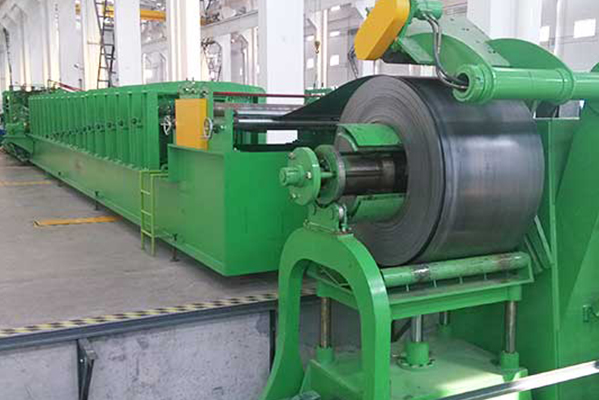Navigation Menu
Contact Us
- Email:
- info@wxavatar.com
- Address:
- Yurong Village, Yuqi Street, Huishan District, Wuxi, China.
Release Date:Mar 25, 2025 Visit:56 Source:Roll Forming Machine Factory
1. Introduction
Steel silo roll forming machines are specialized equipment designed to transform flat metal coils into precisely curved panels used in cylindrical silo construction. Understanding their operating principle is essential for proper operation, maintenance, and optimization of production processes.
2. Core Working Principle
The machine operates on the principle of progressive metal deformation through a series of roller dies, gradually bending flat metal strips into curved panels with consistent radius and thickness.
Key Characteristics:
Continuous forming process
Cold-working metal deformation
Multi-stage bending progression
Computer-controlled precision
3. Detailed Operational Process
3.1 Material Feeding Stage
1.Coil Loading:
Steel coils (typically 0.8-6mm thickness) are mounted on the decoiler
Coil weight ranges from 1-5 tons depending on silo size requirements
2.Straightening:
Leveling rollers remove inherent coil curvature
Ensures flat material entry into forming section

3.2 Progressive Roll Forming Stage
Stage Function Technical Detail
1st Roll Station Initial edge bending 15-25° bend initiation
2nd-5th Stations Progressive curvature 30°→60°→90°→120° incremental bending
Final Stations Radius completion Achieves full 180°+ curvature
Guide System Lateral stability Prevents material wandering
3.3 Curvature Formation Mechanics
Bending Physics:
Outer fiber stretching
Inner fiber compression
Neutral axis maintenance
Springback Compensation:
Over-bending design
Material-dependent adjustment
Real-time monitoring systems
3.4 Cutting System Operation
Measurement:
Encoder-based length counting
Photoelectric sensors for positioning
Cutting Methods:
Hydraulic guillotine (thicker materials)
Rotary shear (high-speed production)
Laser cutting (precision applications)
4. Technical Control Systems
4.1 Computerized Control
PLC-based operation
HMI touchscreen interface
Production data logging
4.2 Precision Adjustment Mechanisms
Roller gap adjustment (±0.05mm precision)
Curvature radius control
Speed synchronization systems
4.3 Safety Monitoring
Overload protection
Material jam detection
Emergency stop circuits
5. Material Science Considerations
5.1 Metal Behavior During Forming
Work hardening effects
Grain structure changes
Residual stress management
5.2 Material Compatibility
Material Type Thickness Range Special Considerations
Galvanized Steel 0.8-4.0mm Zinc coating protection
Stainless Steel 1.0-3.0mm Higher forming resistance
Aluminum Alloy 1.2-5.0mm Softer material handling
6. Production Output Specifications
6.1 Standard Performance Metrics
Line speed: 6-20 m/min
Daily output: 800-1,500 linear meters
Panel width: 300-1,200mm
Diameter range: 3-12 meters

6.2 Quality Control Parameters
Curvature tolerance: ±0.5mm/m
Length accuracy: ±1mm
Surface defect inspection
7. Advanced Technological Developments
7.1 Smart Manufacturing Features
IoT-enabled performance monitoring
Predictive maintenance systems
Automated quality inspection (AI vision)
7.2 Energy Efficiency Innovations
Servo motor drives
Regenerative braking systems
Heat recovery units
8. Conclusion
The steel silo roll forming machine operates on precise mechanical principles combining material science, mechanical engineering, and automation technology. Its progressive roll forming process enables efficient, high-quality production of curved silo panels with consistent geometrical accuracy. Understanding these fundamental principles allows operators to maximize production efficiency while maintaining product quality and equipment longevity.
Modern advancements continue to enhance these machines' capabilities through smarter controls, improved energy efficiency, and higher precision forming technologies - making them indispensable in contemporary silo manufacturing operations.